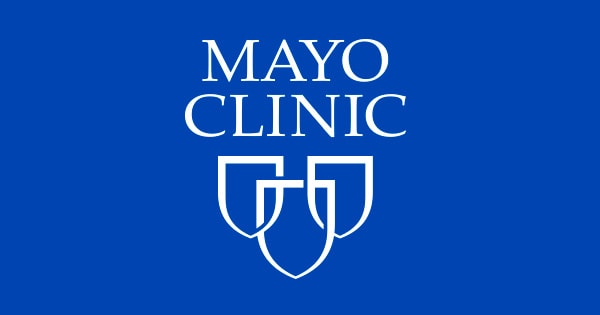Ready to leave?
Oops ! Condition name you have entered is invalid.
You are now leaving Aposbook.com and going to an external site managed by another organization.
Please confirm your email address and try to login again.
This account has been deleted. do you want to restore it?

Validate your email
A verification link will be sent to within the next 2 minutes. Please click it to validate your e mail.
*If you didn't get the link, please check your spam folder
Welcome to Aposbook,
As a registered user, you can benefit from the various free tools and services that we provide.
All you need to do is log in to start discussing with others, interacting, asking questions, and sharing your point of view about the various topics.
You can also write reviews and testimonials about any natural solution you have tried and share your experience. Your feedback can be very helpful.
If you are a health expert, you can add information about any topic or suggest text edit. You can also publish content, including articles and videos, about any topic from the related library section.
Together we can help.
The Aposbook Team
Forgot Password?
A validation link will be sent to you by email. Please confirm your address to log in
*If you didn't get the link, please check your spam folder
Please log in to use this feature
Your account has been suspended because you have violated our code of conduct. If you think this was a mistake, you can contact us by email at: support@aposbook.com "Contact us" form.
Success! Thank you for your feedback. Your contribution can make a difference. Together we can help each other.


Diseases and conditions
Heart Disease
Heart Disease: Causes, Prevention, and Natural Treatments
Complete Guide to Heart Disease

Arrhythmia
Arrhythmia is defined as heart rhythm problems. There are various types of arrhythmia, such as:
a) Bradycardia: occurs ...
Arrhythmia is defined as heart rhythm problems. There are various types of arrhythmia, such as:
a) Bradycardia: occurs when the heart rate is too slow, beating less than 60 beats per minute.
b) Tachycardia: occurs when the heart rate is too fast, beating more than 100 beats per minute.

Congenital heart disease
Congenital heart diseases are heart defects present at birth. Some examples include:
a) Septal defects: which occur because ...
Congenital heart diseases are heart defects present at birth. Some examples include:
a) Septal defects: which occur because of a hole between the two chambers of the heart.
b) Obstruction defects: which occur when the blood flow through different chambers of the heart is completely or partially blocked.
c) Cyanotic heart disease: which occurs when there is an oxygen shortage in the body.

Dilated cardiomyopathy
Dilated cardiomyopathy occurs when a weakness in the heart muscle causes the chambers of the heart to become ...
Dilated cardiomyopathy occurs when a weakness in the heart muscle causes the chambers of the heart to become dilated, so the heart cannot pump blood properly.

Heart failure
Heart failure occurs when the heart fails to pump blood around the body. It is also known ...
Heart failure occurs when the heart fails to pump blood around the body. It is also known as congestive heart failure.

Hypertrophic cardiomyopathy
Hypertrophic cardiomyopathy is a genetic disorder that causes the wall of the left ventricle to thicken, making it difficult ...
Hypertrophic cardiomyopathy is a genetic disorder that causes the wall of the left ventricle to thicken, making it difficult to pump blood out of the heart.
This is one of the leading causes of sudden death for athletes. It can be hereditary and carriers of the disease have a 50% chance of passing it onto their offspring.

Mitral regurgitation
Mitral regurgitation occurs when the mitral valve of the heart cannot close properly, leading to a backflow of ...
Mitral regurgitation occurs when the mitral valve of the heart cannot close properly, leading to a backflow of blood into the heart. As a result, the blood can’t circulate properly, leaving patients tired most of the time.

Mitral valve prolapse (MVP)
Mitral valve prolapse occurs when the valve between the left atrium and left ventricle fails to close completely ...
Mitral valve prolapse occurs when the valve between the left atrium and left ventricle fails to close completely. This causes blood to flow in the wrong direction, but this does not cause any health threat to patients. Hence, treatment may not be required.

Myocardial infarction
Myocardial infarction occurs when blood flow is interrupted causing damage to part of the heart muscle. It is ...
Myocardial infarction occurs when blood flow is interrupted causing damage to part of the heart muscle. It is also known as heart attack, cardiac infarction, or coronary thrombosis.

Pulmonary stenosis
Pulmonary stenosis occurs when the pulmonary valve is too tight preventing the heart from pumping blood from the right ...
Pulmonary stenosis occurs when the pulmonary valve is too tight preventing the heart from pumping blood from the right ventricle into the pulmonary artery.
This condition requires treatment if the right ventricle is under very high pressure. Doctors can perform open-heart surgery to remove the obstruction.
What is Heart Disease
Heart disease refers to a range of conditions that can cause disorders in the heart. Various conditions fall under the umbrella of heart disease, such as coronary artery disease, problems in the heart rhythm (arrhythmia), and heart deformities you’re born with (congenital heart defects), among others.
The term "heart disease" is often used interchangeably with the term cardiovascular disease. Cardiovascular disease (CVD) refers to conditions affecting the heart or blood vessels.
CVD is mostly ...
What is Heart Disease
Heart disease refers to a range of conditions that can cause disorders in the heart. Various conditions fall under the umbrella of heart disease, such as coronary artery disease, problems in the heart rhythm (arrhythmia), and heart deformities you’re born with (congenital heart defects), among others.
The term "heart disease" is often used interchangeably with the term cardiovascular disease. Cardiovascular disease (CVD) refers to conditions affecting the heart or blood vessels.
CVD is mostly associated with atherosclerosis, which is a build-up of plaque that consists mainly of fat, cholesterol, calcium, and other substances.
This buildup narrows the arteries, making it harder for blood to flow through them. This can lead to the formation of blood clots, which block blood flow to the heart or brain, causing a heart attack or stroke.
Heart disease is the number one killer of men and women in the United States today. The Centers for Disease Control and Prevention (CDC) estimate that heart disease leads to 1 in 4 deaths in the United States each year. The prevalence of heart disease in the United States is due to people’s unhealthy lifestyles and poor dietary choices.
Heart Disease History
The first recorded cases of heart disease date back 3,500 years ago. This discovery was made in 2009, when a group of researchers conducted a scan on mummies from ancient Egypt and found out that 9 out of the 16 Egyptian mummies had atherosclerosis. According to the American Heart Association, the disease spread among the ancient Egyptians was due to poor diet and high consumption of fatty meats.
In 1768, William Heberden first mentioned a condition ...
Heart Disease History
The first recorded cases of heart disease date back 3,500 years ago. This discovery was made in 2009, when a group of researchers conducted a scan on mummies from ancient Egypt and found out that 9 out of the 16 Egyptian mummies had atherosclerosis. According to the American Heart Association, the disease spread among the ancient Egyptians was due to poor diet and high consumption of fatty meats.
In 1768, William Heberden first mentioned a condition called angina or tightness in the chest. At the time, people believed that angina was a condition related to blood circulation in the coronary arteries.
Later on, Sir William Osler worked on angina and he was the first physician to indicate that angina was a syndrome rather than a disease in itself.
The 1900s witnessed a gradual improvement in the understanding of heart disease. For instance, in 1912, James Herrick, an American cardiologist, concluded that angina caused the gradual narrowing of the coronary arteries.
In 1915, a group of doctors and social workers organized the Association for the Prevention and Relief of Heart Disease in New York City.
In 1924, multiple cardiologists came together to form the American Heart Association (AHA). As there was so little information about heart disease back then, these doctors were determined to learn more about the condition.
In 1958, a cardiologist at the Cleveland Clinic was able to produce high-quality diagnostic images of the coronary arteries. For the first time, this technique made it possible to have an accurate diagnosis of coronary artery disease.
In the 1960s and 1970s, new surgical techniques began to develop. Cardiologists conducted bypass surgeries in which they redirect blood flow around a blocked artery.
In 1986, another surgical technique was discovered when two cardiologists used a coronary stent for the first time. They used the stent as a scaffold to avoid the risk of the coronary artery closing.
Today, with the help of technology, bypass surgeries are relatively safe. Open heart operations have a success rate of around 97%.
Cardiologists can also better predict the risks of a heart disease ahead of time by using advanced diagnostic tools like 3D imaging. 3D imaging permits doctors to examine the heart in three dimensions, which allows them to better assess the extent of the problem.
Heart Disease Causes
There are several leading causes for cardiovascular disease. These include:
1- Obesity or being overweight: being overweight increases the risk of heart disease because too much fat stimulates the formation of blood clots in the arteries. This can cause them to become narrower, causing atherosclerosis.
2- High blood pressure: high blood pressure increases the risk of heart disease because it puts additional pressure on the walls of the arteries. Over time, this pressure can damage the coronary ...
Heart Disease Causes
There are several leading causes for cardiovascular disease. These include:
1- Obesity or being overweight: being overweight increases the risk of heart disease because too much fat stimulates the formation of blood clots in the arteries. This can cause them to become narrower, causing atherosclerosis.
2- High blood pressure: high blood pressure increases the risk of heart disease because it puts additional pressure on the walls of the arteries. Over time, this pressure can damage the coronary arteries, making them more susceptible to the narrowing and build-up of plaque associated with atherosclerosis.
3- High cholesterol: having high levels of cholesterol increases the risk of heart disease since it causes the development of fatty deposits in the arteries. As a result, these deposits grow along the walls of the arteries, leaving the arteries less elastic and narrower. The fatty deposits may interfere with the blood flow through the arteries, increasing the risk of atherosclerosis.
4- Inflammation: inflammation increases the risk of heart disease because it causes plaque accumulation inside the coronary arteries leading to the narrowing and blockage of the blood vessels.
Cardiovascular Disease Risk Factors
There are several factors that may increase the risk of atherosclerosis. Some of these include:
1- Diabetes: people with diabetes are at a higher risk of developing atherosclerosis because high levels of glucose in the blood can damage the blood vessels. When the body does not utilize blood sugar properly and its levels remain high, the glucose can stick to the blood cells and build up in the arteries.
Diabetic people might have a higher risk ...
Cardiovascular Disease Risk Factors
There are several factors that may increase the risk of atherosclerosis. Some of these include:
1- Diabetes: people with diabetes are at a higher risk of developing atherosclerosis because high levels of glucose in the blood can damage the blood vessels. When the body does not utilize blood sugar properly and its levels remain high, the glucose can stick to the blood cells and build up in the arteries.
Diabetic people might have a higher risk of developing heart diseases because of a deficiency in a specific enzyme. This enzyme, called extracellular signal-regulated kinase 5 (ERK-5), is responsible for blood vessel dilation. Therefore, people with an ERK-5 deficiency may have narrower arteries. It also blocks inflammatory immune cells from reaching the diseased parts of the arteries. An ERK-5 deficiency leaves the arteries unprotected and more vulnerable to atherosclerosis.
2- Aging: as people age, so do the arteries. They become less elastic, making it harder for blood to flow through them. Consequently, aging may cause atherosclerosis. According to U.S. statistics, the lifetime risk of atherosclerosis at age 40 is 48.6% for men and 31.7% for women. However, the risk of developing coronary heart disease before age 40 years is low.
3- Smoking: Light cigarette, pipe, and cigar smokers run an increased risk for atherosclerosis and sudden coronary death. Even passive smoking can increase the possibility of atherosclerosis. People who have been exposed to cigarette smoke for a period of 20 minutes up to 8 hours can have decreased ability of the arteries to receive and process oxygen.
4- Lack of exercise: Lack of physical activity has been shown to be a risk factor for atherosclerosis because less active and less fit people have a greater risk of developing high blood pressure, heart attack, stroke and other heart related problems.
Cardiovascular Disease Symptoms
The symptoms of atherosclerosis may not appear until the narrowed coronary arteries become blocked and severely obstruct blood flow to the heart. But atherosclerosis can start developing decades before symptoms arrive.
These symptoms might include:
- Chest pain
- Shortness of breath
- Tiredness
- Weakness in the muscles of the legs due to lack of circulation
- Pain in the legs, arms, and anywhere else that has a blocked artery
- Dizziness
- Sweating
- Heartburn
- Stomachache
Cardiovascular Disease Symptoms
The symptoms of atherosclerosis may not appear until the narrowed coronary arteries become blocked and severely obstruct blood flow to the heart. But atherosclerosis can start developing decades before symptoms arrive.
These symptoms might include:
- Chest pain
- Shortness of breath
- Tiredness
- Weakness in the muscles of the legs due to lack of circulation
- Pain in the legs, arms, and anywhere else that has a blocked artery
- Dizziness
- Sweating
- Heartburn
- Stomachache
Heart Disease Diagnosis
To diagnose atherosclerosis, the doctor first needs to take the patient’s medical history. By asking the patient questions about his/her medical history, the doctor would be able to check if the patient is at risk of developing atherosclerosis.
After obtaining the medical history, doctors may proceed with diagnostic tests that might include any, or a combination of, the following:
- Blood tests: blood tests check the levels of certain fats, cholesterol, and sugar in the blood. Abnormal ...
Heart Disease Diagnosis
To diagnose atherosclerosis, the doctor first needs to take the patient’s medical history. By asking the patient questions about his/her medical history, the doctor would be able to check if the patient is at risk of developing atherosclerosis.
After obtaining the medical history, doctors may proceed with diagnostic tests that might include any, or a combination of, the following:
- Blood tests: blood tests check the levels of certain fats, cholesterol, and sugar in the blood. Abnormal test results may indicate risk factors for atherosclerosis.
- EKG (Electrocardiogram): an EKG is a simple test that records the heart’s electrical activity. It shows how fast the heart is beating and whether it has a regular rhythm. An EKG also can indicate if a person has had a heart attack previously or if he or she is currently having one.
- Chest X-ray: a chest X-ray takes a picture of the organs and structures inside the chest, including the heart, lungs, and blood vessels. A chest X-ray can also reveal signs of heart failure.
- Ankle/Brachial index: this test looks at the blood pressure in the patient’s ankle and compares it to the blood pressure in the arm to see how well the blood is flowing throughout the patient’s body.
- Echocardiography: this test uses sound waves to create a moving image of the heart and provides information about the heart’s size and shape. It indicates how well the heart’s chambers and valves are working. An echocardiogram can also identify areas of poor blood flow to the heart, areas of the heart muscle that aren’t contracting normally, and previous injury to the heart muscle caused by poor blood flow.
- Computed Tomography Scan: a computed tomography, or CT, scan creates computer-generated images of the heart, brain, or other areas of the body. It can often show the hardening and narrowing of large arteries.
- Angiography: an angiography is a test that uses dye and special x-rays called angiograms to show the insides of the arteries. It can reveal whether or not plaque is blocking the arteries, and how severe the blockage is. Accordingly, the doctor injects a dye that is visible on an x-ray into the arteries. Looking at the angiogram, it becomes possible to see the flow of blood through the arteries and assess if there is any damage to the heart or arteries.
Natural Treatments for Heart Disease
There are many natural solutions for coronary heart disease. These natural solutions can help prevent heart disease or even stop its development by addressing the main risk factors such as cholesterol levels and blood pressure, among other problems.
Some of these main natural solutions for heart disease include:
1. Diets: a healthy diet can reduce the levels of cholesterol and fats in the blood vessels, which are critical risks factors for the development of cardiovascular disease. Having ...
Natural Treatments for Heart Disease
There are many natural solutions for coronary heart disease. These natural solutions can help prevent heart disease or even stop its development by addressing the main risk factors such as cholesterol levels and blood pressure, among other problems.
Some of these main natural solutions for heart disease include:
1. Diets: a healthy diet can reduce the levels of cholesterol and fats in the blood vessels, which are critical risks factors for the development of cardiovascular disease. Having a normal level of cholesterol in the blood prevents the accumulation of plaques inside the arteries.
Some other diets, such as the DASH diet, can be effective for lowering blood pressure, which damages the arteries and causes atherosclerosis.
It is also important to avoid inflammatory foods because these may promote the growth of plaques in the arteries and trigger blood clots.
2. Herbs: some herbs showed positive results in the prevention and treatment of atherosclerosis. These herbs work on lowering lipid levels in the blood, preventing plaque accumulation, and providing anti-inflammatory effects.
3. Nutritional supplements: some nutritional supplements such as Omega fatty acids, can help fight the accumulation of plaque inside the arteries. This might prevent the further development of atherosclerosis.
4. Lifestyle changes: these changes can include quitting smoking, regular exercise and sports activities, and managing stress. The use of some essential oils can be beneficial for the heart as well because it has calming effects that can help reduce stress and anxiety, which are major contributing factors in the development of heart disease.
Click on natural treatments for heart disease to find a detailed list of all the natural solutions to treat heart disease, including various natural therapies, diet programs, alternative medicine, vitamins, supplements, herbal medicine, and home remedies. You can also go to www.aposbook.com to find all the natural treatments for any medical condition IN ONE CLICK.
Medical Treatment for Heart Disease
Western conventional medicine does not have a cure for heart disease yet. Doctors usually prescribe medications, and in extreme cases, present surgical options to treat heart disease.
Most doctors recommend that people adopt healthy lifestyle choices like changing their eating habits, avoiding fatty or sugary foods, and maintaining a regular exercise routine to prevent heart disease.
The medications mentioned below may stop the development of the condition or prevent a heart attack or stroke ...
Medical Treatment for Heart Disease
Western conventional medicine does not have a cure for heart disease yet. Doctors usually prescribe medications, and in extreme cases, present surgical options to treat heart disease.
Most doctors recommend that people adopt healthy lifestyle choices like changing their eating habits, avoiding fatty or sugary foods, and maintaining a regular exercise routine to prevent heart disease.
The medications mentioned below may stop the development of the condition or prevent a heart attack or stroke from occurring.
1. Statin drugs: these drugs block the enzymes that produce cholesterol. Lowering cholesterol levels can prevent the blockage of arteries and stop the progression of atherosclerosis.
2. ACE inhibitors: these drugs target the inhibition of an enzyme that constricts the arteries and results in increased blood pressure. Taking those inhibitors lowers blood pressure that destroys the arteries and helps overcome arterial constriction that is associated with atherosclerosis.
In extreme cases, the medications may be ineffective in treating heart problems, particularly if the condition is advanced. In that case, doctors may want to perform a surgery to widen the narrowed arteries. Some of the most common surgeries include:
- Angioplasty: surgeons use a balloon catheter to widen narrowed arteries that could be interfering with blood flow to the rest of the body.
- Coronary artery bypass: surgeons take an artery from the leg, arm, or chest and connect it to the heart, bypassing the blocked artery. This permits the passage of blood to the blocked part of the heart.
- Stent placement: surgeons take a small tube and insert it into the body during the surgery to prevent the coronary artery from closing. There are two types of stents, those that dissolve in the body and those that are permanent, made of metal mesh. Nowadays, it is the most common surgery used to treat heart disease.
Heart Disease Prevention
Visit the Heart Disease Prevention Center to check all the information on how to prevent cardiovascular disease, including the different recommendations to follow and what you should avoid.
Some of these suggestions include, among many others:
- Maintaining a healthy weight
- Refraining from smoking
- Monitoring blood pressure
- Avoiding stress
You can also find a detailed explanation why each one of these recommendations can help prevent heart disease and lower its risks, and how it should be done.
Heart Disease Prevention
Visit the Heart Disease Prevention Center to check all the information on how to prevent cardiovascular disease, including the different recommendations to follow and what you should avoid.
Some of these suggestions include, among many others:
- Maintaining a healthy weight
- Refraining from smoking
- Monitoring blood pressure
- Avoiding stress
You can also find a detailed explanation why each one of these recommendations can help prevent heart disease and lower its risks, and how it should be done.
Frequently asked questions
Can diet and lifestyle changes help in managing heart disease?
Yes, making dietary changes such as reducing saturated fats, sodium, and refined sugars while increasing intake of fruits, vegetables, whole grains, and lean proteins, combined with regular physical activity and stress management, can significantly improve heart health and manage heart disease.
What are some natural supplements or herbs beneficial for heart health?
Supplements such as omega-3 fatty acids, coenzyme Q10 (CoQ10), magnesium, garlic, and hawthorn extract are ...
Frequently asked questions
Can diet and lifestyle changes help in managing heart disease?
Yes, making dietary changes such as reducing saturated fats, sodium, and refined sugars while increasing intake of fruits, vegetables, whole grains, and lean proteins, combined with regular physical activity and stress management, can significantly improve heart health and manage heart disease.
What are some natural supplements or herbs beneficial for heart health?
Supplements such as omega-3 fatty acids, coenzyme Q10 (CoQ10), magnesium, garlic, and hawthorn extract are known for their potential benefits in supporting heart health and managing heart disease naturally.
How can stress management techniques aid in treating heart disease?
Exercising not only helps you destress, it also protects against heart disease by lowering your blood pressure, strengthening your heart muscle, and helping you maintain a healthy weight.
Are there any specific foods or nutrients known to improve heart health?
According to the National Heart, Lung, and Blood Institute , the following foods are the best for your heart: Vegetables: such as leafy greens, broccoli, and carrots. Fruits: such as apples, bananas, and oranges. Whole grains: such as plain oatmeal, brown rice, and whole-grain bread or tortillas.
What role does smoking cessation play in natural heart disease treatment?
Quitting smoking is one of the most important steps in managing heart disease naturally. Smoking cessation reduces the risk of heart attack, stroke, and other cardiovascular complications, while also improving overall cardiovascular health and longevity.
Are there any potential risks or precautions associated with natural treatments for heart disease?
It's important to exercise caution and seek guidance from a healthcare professional when considering natural treatments for heart disease, particularly if you're on medications or have pre-existing health conditions. Some supplements or herbs might interact with medications or have adverse effects. Therefore, it's vital to consult your doctor before integrating any natural treatments into your routine. Moreover, lifestyle adjustments should be introduced gradually and personalized to meet your specific requirements to ensure sustained effectiveness in managing heart disease naturally.
Are there any dietary supplements that can help with heart disease?
Some supplements, such as omega-3 fatty acids, CoQ10, and garlic extract, have shown potential benefits for heart health. However, it's essential to use supplements cautiously and under the guidance of a healthcare provider, as they can interact with medications and may not be suitable for everyone.
What dietary changes are recommended for heart health?
A heart-healthy diet typically includes plenty of fruits, vegetables, whole grains, lean proteins, and healthy fats such as those
found in nuts, seeds, and oily fish. Limiting saturated and trans fats, sodium, and added sugars is also important for heart health.
Is exercise important for managing heart disease naturally?
Absolutely. Regular exercise helps strengthen the heart muscle, improve circulation, lower blood pressure and cholesterol levels, and maintain a healthy weight, all of which are crucial for managing heart disease naturally.
Explore other Diseases and conditions
Natural Treatments for Heart Disease
Heart Disease Dos and Don'ts
Excessive weight can increase the deposit of plaque (cholesterol and fat) in the arteries. Plaque deposits narrow the arteries and lead to their blockage. Thus, sustaining a
Engaging in physical activity is very important for heart health because it can strengthen the heart muscles. This provides additional health support and helps the coronary
Visit your doctor regularly to do check ups and keep track of your overall health. Blood tests are required to prevent the risks of heart disease. Tests should
Getting enough sleep is essential to protect your heart from the risk of atherosclerosis. Sleep deprivation or oversleeping might activate certain chemicals that increase blood
It’s important to always monitor your blood pressure to make sure it’s normal and well controlled. High blood pressure is known as the "silent
Do not drink more than 14 units of alcohol per week because excessive alcohol consumption has been shown to damage the heart arteries.
Psychosocial stressors might activate the release of chemical substances in the blood such as catecholamines and glucocorticoids. Those substances can increase the blood flow
Salt can increase blood pressure which can damage the heart’s arteries.
Smoking can permanently damage your heart and blood vessels and cause plaque to build up in the arteries. Plaque is a waxy substance consisting of cholesterol, calcium,
Calcium is very good for the bones. However, researchers found that doses of calcium supplement exceeding 1,000 mg per day might increase the risk of cardiovascular
Dos and Don'ts
Library center Heart Disease
Success storiess

Mount Sinai – First Hospital in U.S. to offer chelation therapy for heart patients.

Keto Diet and Heart Disease | Russ Scala



















































































[0]